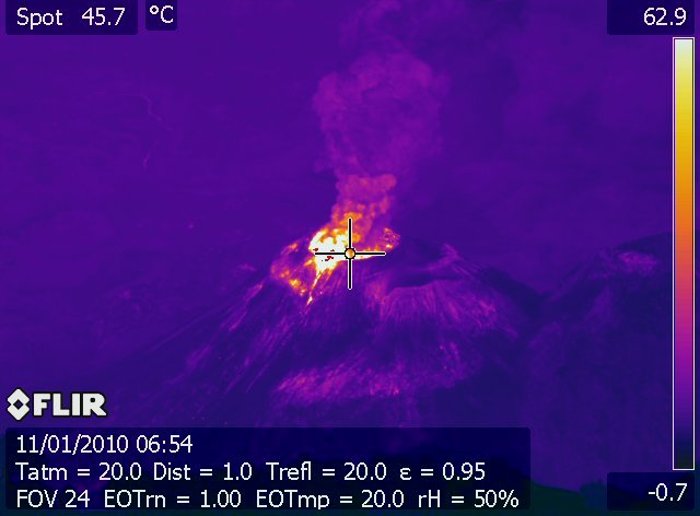Science & Engineering Expo on National Mall: Michigan Tech NSF Program Answers Burning Questions About Volcanoes

How can you tell if a volcano is about to blow? What tools do you use to monitor a volcano? What’s so important about volcanoes, anyway? The world—including thousands of school-age youngsters—will get hands-on answers from Michigan Technological University at the first annual USA Science and Engineering Festival, Oct. 23-24 on the National Mall in Washington, D.C.
Michigan Tech’s volcano exhibit is in Freedom Plaza (Section PA-13, Booth #1317). Graduate students Luke Bowman, Kyle Brill and Anieri Morales Rivera will demonstrate equipment and techniques used by field researchers to monitor volcanic activity. By doing this monitoring, volcanologists can learn more about volcanic processes and identify potential precursors to eruptions.
The team hopes their exhibit will get people interested in geology. “Geology is a science full of wonders, excitement and lots of things to discover,” says Morales Rivera, “from understanding natural processes that may become a hazard to humans, such as volcanoes, to improving our knowledge of Earth and planetary sciences.” People are “exposed to geology in a daily basis,” she points out, “from the use of mineral resources to the location of petroleum and water supplies.”
To help illustrate what they look for when monitoring volcanoes, the Tech team is bringing an accelerometer and a Forward-Looking Infrared, or FLIR, camera. To demonstrate the accelerometer, which measures seismic activity, guests will be invited to jump on the ground, creating earthquake-like vibrations that the accelerometer will pick up and display as a seismogram.
The graduate students will also show visitors pictures of themselves taken with the FLIR camera, which measures an object’s radiant energy, translates it into temperature, and displays an image using light intensity or color brightness to show levels of heat.
“Scientists can’t predict eruptions,” says Morales Rivera, “but we can talk about the probability of one based on changes in the volcano’s behavior, such as increased seismicity, changes in gas concentrations coming out of the volcano, and deformation of the volcano itself.”
The exhibit will also explain the kinds of hazards posed by a volcanic eruption, from ash clouds that can block sunlight and interfere with airline flights, to lava flows that can burn everything in their path.
Michigan Tech’s Department of Geological and Mining Engineering and Sciences is one of only 15 National Science Foundation-funded projects invited to participate nationwide. Tech’s project is part of the NSF’s Partnership for International Research and Education (PIRE) program. Tech operates PIRE programs in Ecuador, El Salvador, Guatemala, Nicaragua, Costa Rica, Panama and Peru.
“The NSF Office for International Science and Education, which manages the PIRE program, was very excited about our selection,” says John Gierke. “We were the only PIRE project that was selected.”
The Science & Engineering Expo is the grand finale of a two-week festival promoting public interest in science, technology, engineering and mathematics. Michigan Tech was invited to bring two interactive exhibits to the Expo, where activities for all ages hosted by more than 350 of the nation’s leading science and engineering organizations will expose attendees to a broad spectrum of science. All events are free and open to the public, and hundreds of thousands of visitors are expected to attend.
Does the Tech team feel intimidated? Of course not, says Bowman. “We hike active volcanoes; we can handle the Mall.”
Michigan Technological University is an R1 public research university founded in 1885 in Houghton, and is home to nearly 7,500 students from more than 60 countries around the world. Consistently ranked among the best universities in the country for return on investment, Michigan's flagship technological university offers more than 185 undergraduate and graduate degree programs in science and technology, engineering, computing, forestry, business, health professions, humanities, mathematics, social sciences, and the arts. The rural campus is situated just miles from Lake Superior in Michigan's Upper Peninsula, offering year-round opportunities for outdoor adventure.




Comments